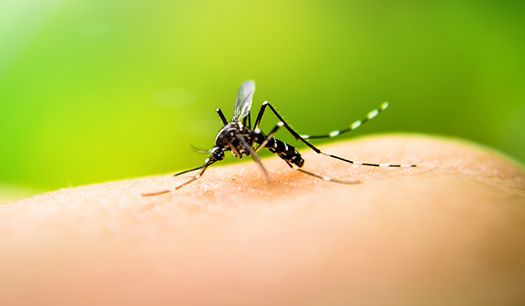Article
Emerging Infections: The Wrath of Zika
Author(s):
A physician shares the history of Zika, best practices to limit transmission.

Our understanding of Zika has evolved dramatically since the virus was discovered nearly 60 years ago. According to one physician, our best practices for treating infected patients should evolve, too.
Speaking to an audience of primary care physicians at the Pri-Med’s West Annual Conference in Anaheim, CA, Gio J. Barocco, MD, associate professor of clinical medicine, Division of Infections Disease, University of Miami School of Medicine, shared those best practices along with a history of the virus.
Zika was first detected in the Zika forest of Uganda in 1947 by researchers studying yellow fever transmission in monkeys. While there were minor outbreaks of the disease — just over 100 cases – in Micronesia in 2009 on Yap Island and more cases a few years later in French Polynesia, these were apparently not of concern to health authorities.
However, in 2015 Brazil reported 35 cases of microcephalic infants born to mothers who lived in or visited Zikaâ€affected areas during pregnancy. After first looking for associations with dengue fever, Brazilian authorities suspected Zika.
“Unbeknownst to them, over the past year or so, they had a huge Zika outbreak, probably more than a million cases,” Barocco said. “But it’s so mild and so non-specific that they just didn’t know it was going on.”
In the following year, the disease spread throughout the Americas, carried by humans who traveled from areas with the virus to be bitten by mosquitos of the Aedes genus in previously uninfected areas.
“This is a different mosquito from the one that transmits malaria [genus Anopheles],” Barocco said. “The malaria mosquito tends to be more rural and is found near rivers and other large water sources, with dawn and dusk being the most dangerous times to avoid exposure.”
However, the Aedes mosquito is not like Anopheles because it can bite day or night. Aedes also likes urban areas and requires only a few milliliters of standing water and just 5 to 7 days to hatch, even indoors. Aedes is well distributed worldwide, and can be found in the southern half of the US. Their eggs can survive desiccation during winter months until conditions are appropriate for hatching.
Luckily, said Barocco, “The flight range of these mosquitos is only about 400 meters, so most of them spend their lifetimes in or around the houses where they emerge as adults.” This means that humans are the key vector for the spread of Zika.
Giving an indication of the scale of transmission, Barocco related that, “In 2015, 9.9 million travelers departed from airports within 50 km of areas with conditions conducive to yearâ€round Zika transmission, and 65% of these traveled to the Americas. Traveler volume was greatest to the US, with almost 3 million travelers.”
Transmission is also possible from human mothers to their infants in utero, as discussed. There is only a small chance of sexual transmission, but this becomes important with women who are pregnant or who are trying to get pregnant.
Clinical manifestations are typically mild, with an incubation period of 2 to 7 days. Fully 80% of infected humans are asymptomatic. Typical symptoms comprise a mild Dengueâ€like illness for 2 to 5 days that may include fever, body aches, rash, and conjunctivitis.
While symptoms of the disease in humans are relatively mild compared with those of Dengue or Chikungunya, the chief concern with Zika involves the well-publicized cases of microcephalic babies born to mothers infected during pregnancy.
Of 972 completed pregnancies reported to the US Zika Registry, there were 77 fetal losses and 895 liveborn infants, with 250 mothers having confirmed Zika infection during pregnancy. Of these mothers, 10% of their infants had birth defects, with three-quarters of these involving microcephaly or other brain disorders. There was no difference if the mother had symptoms or not; the rate of defects increased to 15% if the infection occurred during the first trimester.
“Unfortunately, the developmental defects associated with Zika infection are not limited to the microcephaly seen in dramatic photos of affected children,” said Barocco. “Affected infants from Brazil also displayed abnormalities on brain imaging consistent with intrauterine Zika infection, including subcortical calcifications, decreased brain volume, and ventriculomegaly. All had significant deceleration of head growth, 60% developed epilepsy, and all developed motor disabilities consistent with mixed cerebral palsy.”
The disease can be diagnosed with RT-PCR if tested within 14 days of infection. Otherwise, there is an available MAC-ELISA, but this test is not specific to Zika and requires confirmation by plaqueâ€reduction neutralization testing (PRNT), a test that can take weeks to achieve results. Nevertheless, Zika testing is recommended for asymptomatic pregnant women who have traveled to areas with active Zika transmission.
In terms of management, Barocco said, “No specific vaccine or treatment is available, and supportive care consists only of acetaminophen for fever/pain. NSAIDs are to be avoided. Pregnant women with Zika should be referred to highâ€risk obstetric care and counseling.”
The main goal in disease management is to prevent pregnant women and others from getting the virus by insuring that the patient is not bitten my mosquitos while they are still infectious.




